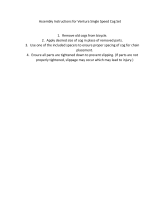
English WIND
1 Part specification .............................................................................................. 3
2 Installation ......................................................................................................... 5
2.1 Installing the instrument ..................................................................................... 6
2.1.1 Installing the instrument to the WSI-box ................................................... 7
2.1.2 Installing the instrument to the NX2 Server ............................................... 8
2.1.3 Connecting to another Nexus instrument. ................................................. 8
3 First start (only in a Nexus Network) ............................................................... 8
3.1 Initialising the instrument ................................................................................... 8
3.2 Re-initialising the instrument .............................................................................. 9
4 Operation ......................................................................................................... 10
4.1 How to use the push buttons ........................................................................... 10
4.1.1 Lighting ................................................................................................... 11
4.2 Main function ................................................................................................... 11
4.3 Analogue function ............................................................................................ 11
4.4 Sub-functions ................................................................................................... 13
4.4.1 True Wind Angle (TWA) ......................................................................... 13
4.4.2 Apparent Wind Speed (AWS) ................................................................. 13
4.4.3 True Wind Speed (TWS) ......................................................................... 13
4.4.1 Boat speed .............................................................................................. 13
4.4.2 Velocity Made Good (VMG) .................................................................... 13
4.4.1 Radio strength indicator (RSI) ................................................................. 14
4.4.2 Geographic wind direction (TWD) ........................................................... 14
5 Calibration ....................................................................................................... 15
5.1 User settings .................................................................................................... 15
5.1.1 Selecting main / top information .............................................................. 15
5.1.1 Selecting graphical information ............................................................... 15
5.1.2 Adjusting damping .................................................................................. 15
5.1.3 Selecting units for BSB, VMG and Wind Speed ...................................... 16
5.1.4 Calibration of the log transducer ............................................................. 16
5.1.5 References for Speed ............................................................................. 16
5.1.6 References for Direction ......................................................................... 17
5.1.7 Wind speed calibration ............................................................................ 17
5.1.8 Adjusting the wind angle ......................................................................... 17
6 Maintenance and fault finding ....................................................................... 19
6.1 Maintenance .................................................................................................... 19
6.2 Fault finding ..................................................................................................... 19
6.2.1 General ................................................................................................... 19
6.2.2 Faults and solutions ................................................................................ 19
7 Specifications ................................................................................................. 20
7.1 Technical specifications ................................................................................... 20
8 Waranty ............................................................................................................ 21





















